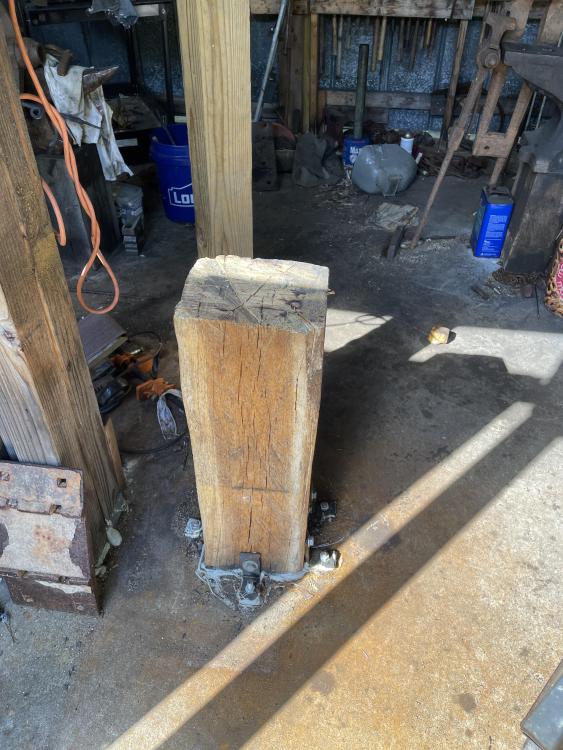-
Posts
137 -
Joined
-
Last visited
Content Type
Profiles
Forums
Articles
Gallery
Downloads
Events
Posts posted by Ridgeway Forge Studio
-
-
It’s a very tall vise, which surprises me.
-
-
Latticino - Tung oil is what I was thinking of all this time! Not mineral oil...
My brother is a woodworker, so I borrow some of his techniques from time to time.
JHCC, You're right - I often use my toaster oven to help cure the oil faster, and I should add that I think I am confusing curing with polymerizing. I stick my oiled metal in the oven to polymerize the oil, not to cure it. it works well, and I can attain a straw temper under the linseed oil if I do it right, making a nice durable gilding effect.
I'm curious about the effect of polymerizing oil-soaked wood. Most wood's flash point is 475 F [or thereabouts], so as long as I set it to 350, I shouldn't get charring, per se, but perhaps a nice Maillard Reaction from any sugars still in the wood.
I still have to make some adjustments to the knife and anneal it today, so I suppose I will perform some of these tests while I do that. Its like science but with more fire...
-
Prayers and well wishes, Frosty.
You're a wellspring of knowledge and joy here and in life.
My wife swears by ginger and tumeric tea to beat anything; I have to admit that it works, or perhaps her letting up on me when I drink it works...
-Pat
-
Buzzkill - I despise dishwashers all around. They make the dishes taste funny. [I don't know, I may just be weird. But I claim they leave a soap residue.]
Is there any problem, after impregnating the scales with cutting board oil [or walnut] sticking it in my toaster oven on low heat, lower than the temper, for a while to cure? I am torn - I can envision it either drying and splitting the scales, or curing the oil inside of the wood.
Perhaps I will try with a wood test coupon before committing to the process.
-
JHCC - You made me think for a moment; I don't think I wrote the right thing. I assumed [incorrectly] that cutting board oil was mineral oil; I was planning to treat the wood like a cutting board, since this will be for food use.
I suppose I will have to find me some resin or some hide glue!
-
Latticino,
Thank you for this: this is the guide I needed. Most that I was finding were for 'bladesmiths' already familiar with the process of making handles.
As far as wood goes, I have some well seasoned locust: I was planning on cutting it down to 1/2" thick or so for each of the scales, trying to use the best grain I can find.
Is there anything I should do to the wood before I follow those steps?
-
I will be the first to admit that I am not a bladesmith. I am a blacksmith, but I wanted to make a vegetable knife for a travel kit.
now, having never made a knife, I come upon the question of finishing the handle. I have searched without luck to understand precisely how to cut handle scales from raw seasoned lumber, and once cut, how to pin and finish without epoxy.
i would like to do this all without “modern” adhesives, if possible.
my thought is simply to take a length of seasoned locust, cut it into rectangles, then drill and use a small diameter copper rod/rivet to attach the scales together, then sand and shape and finish with mineral oil.
is this a recipe for splitting/cracking?here is the knife:
the tang is about 4 inches or so
-
Thank you all! It was a bit of hilarity: most people tried their best to make their tiles beautiful or artistic... I said, Angry Pig Bacon Press.
I will post updates when I finish it up fully.
-
Thanks Daswulf. Now to clamp it in a vise and cut threads in it. I only recently got into tapping threads and think its the neatest thing.
-
Ha! Thanks Frosty. One of the men who was part of the casting team told me that he thought someone let their kid do my block- we had a good chuckle when I explained what it was going to be
-
Jennifer,
Thankfully I do not need a travel setup; The Catoctin Furnace Historical Society built a fully functional blacksmith shop last year; it is an amazing shop to work out of.
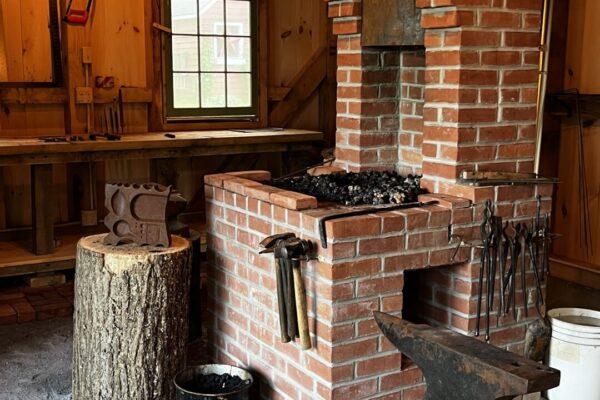
The picture hardly does it justice, but I'll try and dig up some other photos.
Sadly I won't be at the Abana conference in Johnstown; I'm kicking myself - I was in North Adams MA a couple of months ago and I should have stopped by to see your teaching facilities!
-Patrick
-
Thanks! It is a 4x4 tile, about 3/8” thick.
-
Jennifer, sales exceeded expectations. I was demonstrating as well; I love the patter and chatter of folks watching me.
-
-
Every year at the Catoctin Iron Furnace in Thurmont Maryland there is a live iron pour into spectator-made scratch blocks. This year, I wanted to make a useable tile, so I carved two deep holes and will drill and tap for a handle, thus making it a bacon press!
behold; the angry pig bacon press, cast today!
-
Color is often subjective- but yellow/white is the upper limit to forging. It may be your forge does not get very close to welding temps, thus the lower orange color
-
-
Pedro - thanks! We are very happy to live in the mountains. The wildlife is incredible here.
Billy- that’s special. Hummingbirds never cease to amaze me and fascinate me.
-
-
JHCC - that was the drink of the night when I hosted a fateful new years party on December 31st, 2019. We drank to a good year full of fellowship, more social events, and friendship. And then.... Well, you know. 2020 hindsight lol
-
Well, Frosty, I don't know about a good joke, but mounting that anvil must have been a good Four arm workout
-
Don't wag your finger at me, I'm just going by the small picture above - I guess its called a thumbnail!
-
When I got started Blacksmithing, before even acquiring an anvil, I bought a champion 400 whirlwind firepot and blower - and I think I may finally be putting them in retirement, some 112 years after their production.
My firepot has gotten extremely thin and cracked over the years, due to rust and use. I would like to know what the thickness of a firepot should be, at least originally.

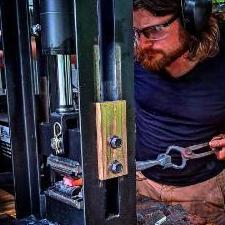
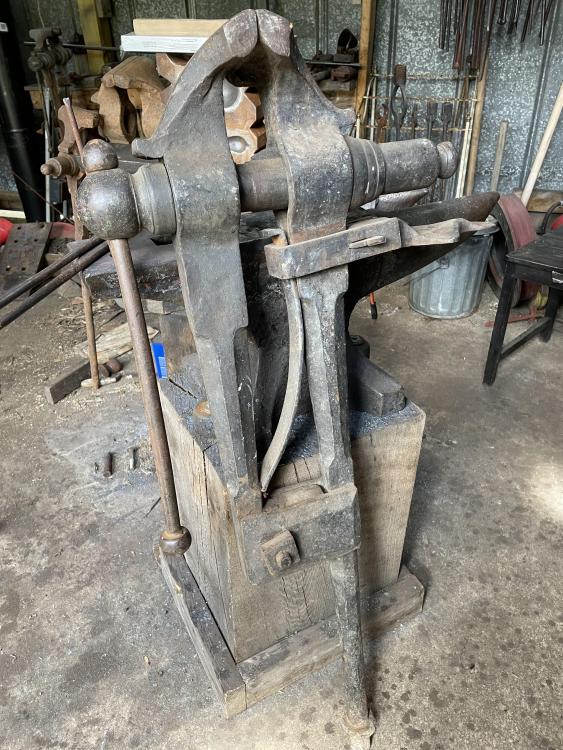
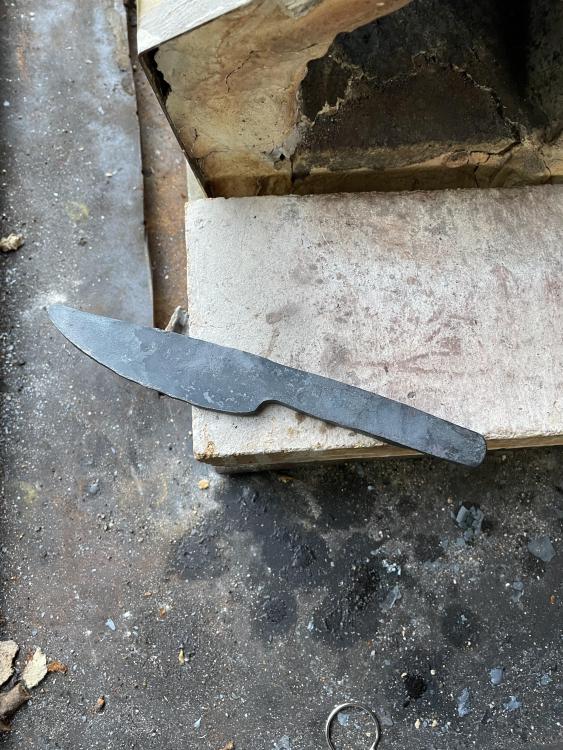
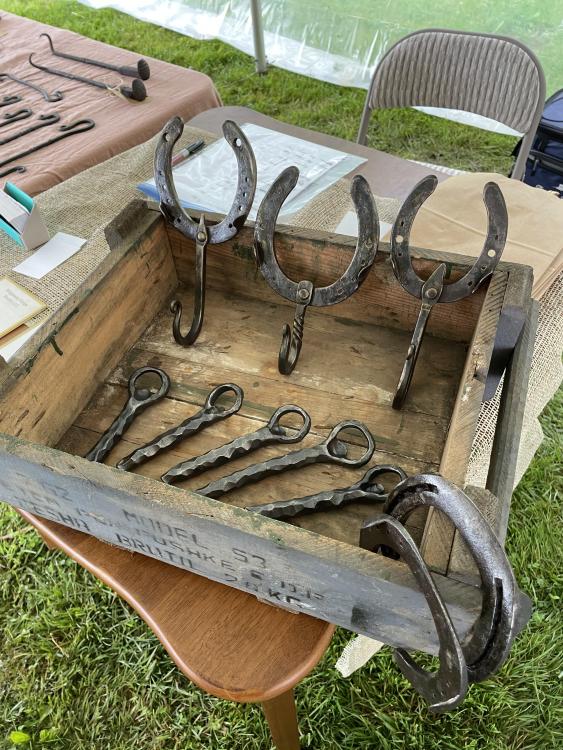
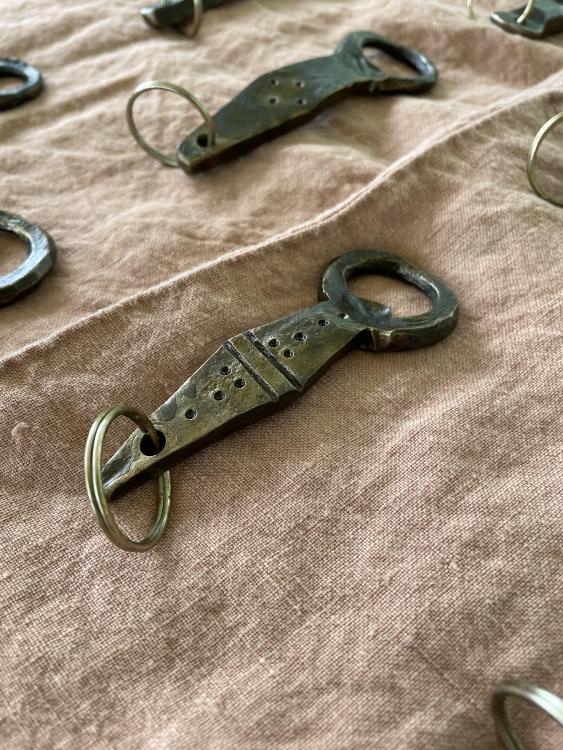
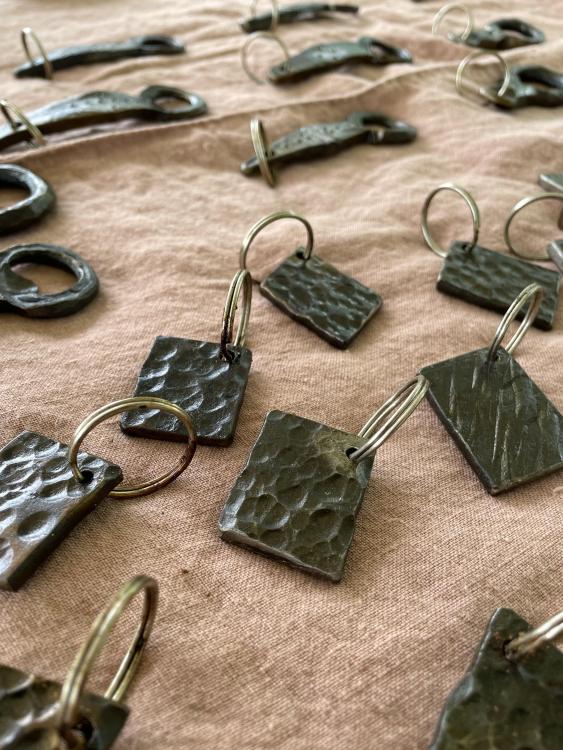
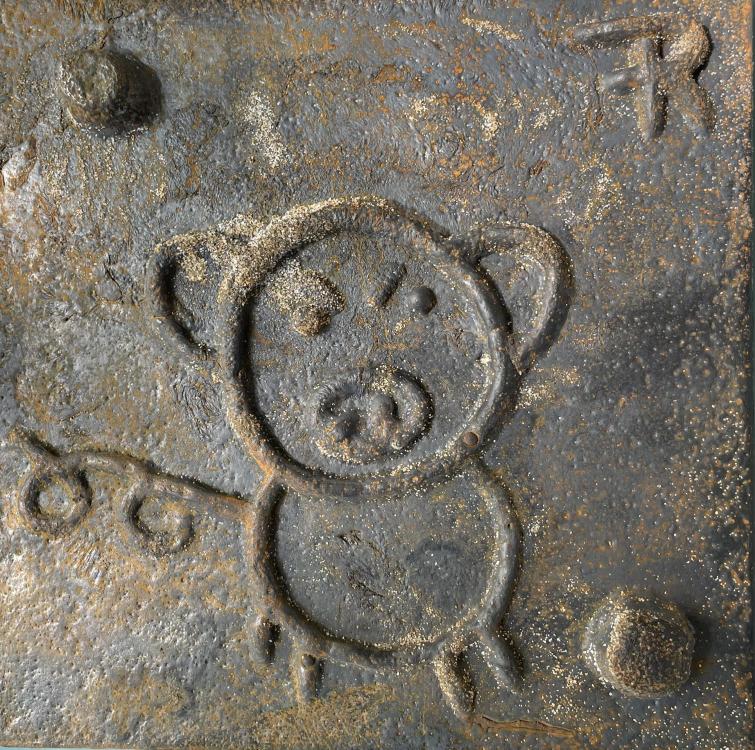
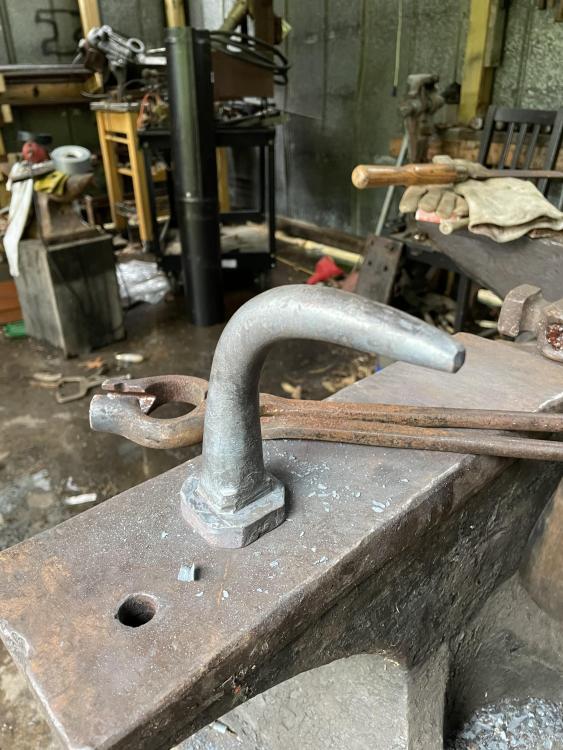
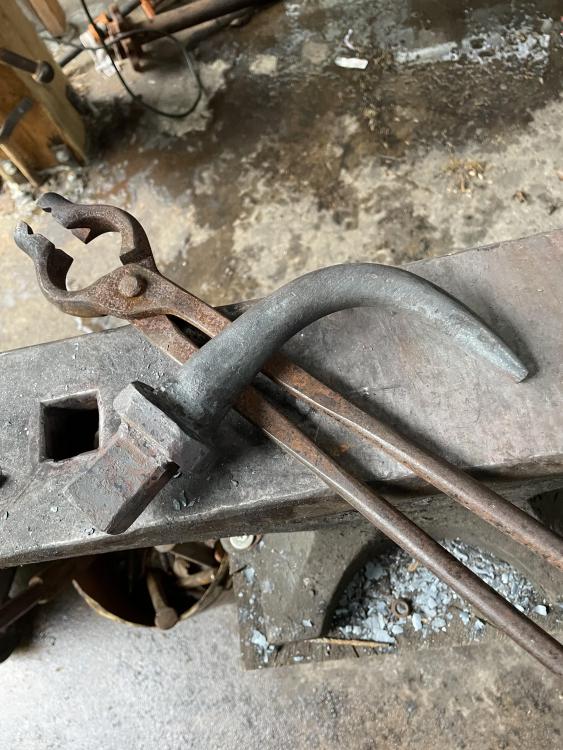
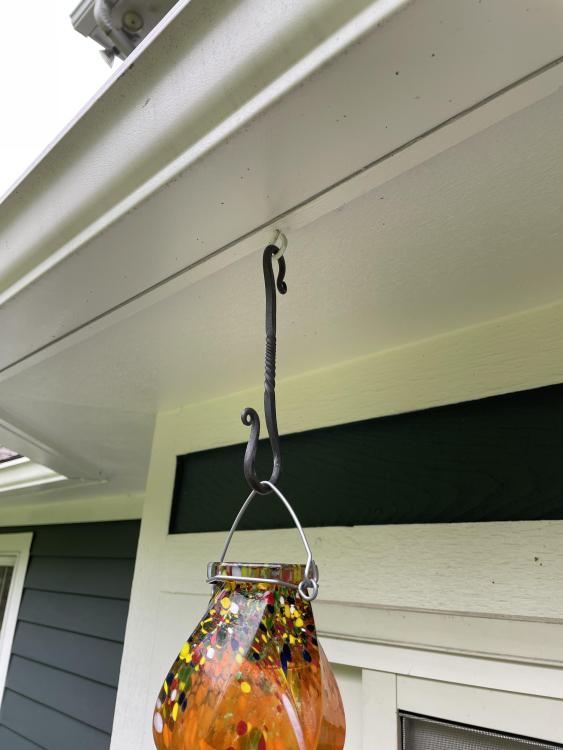
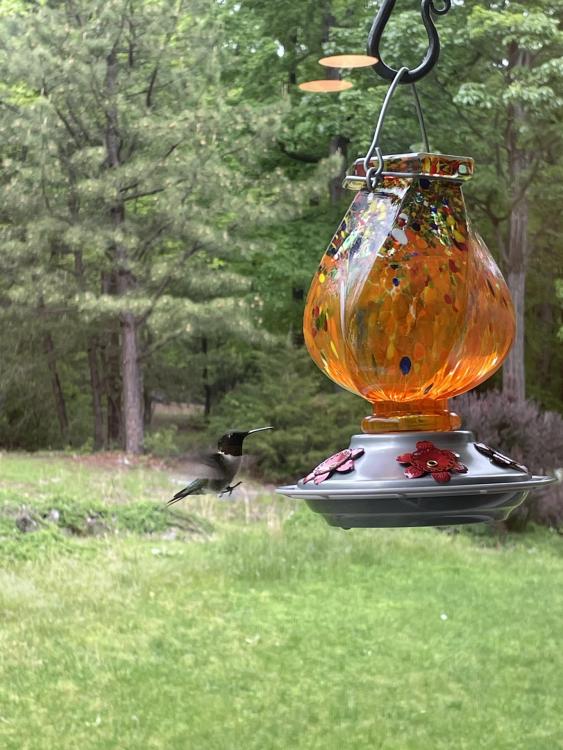
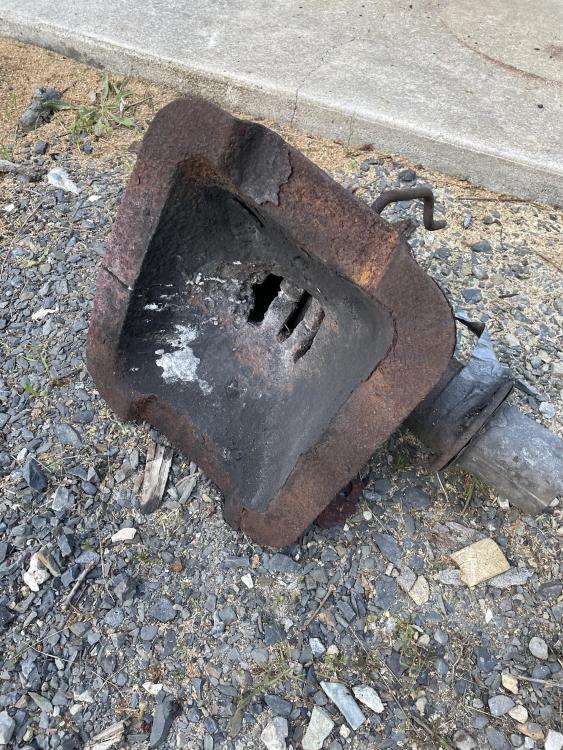
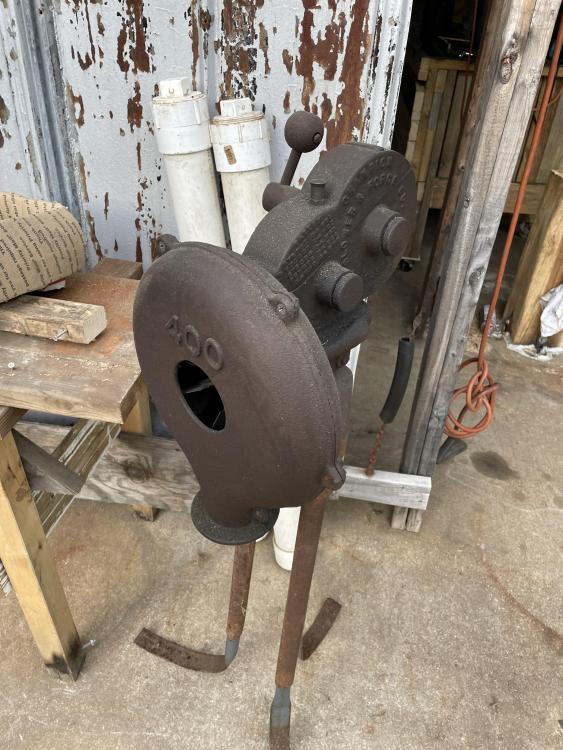
It followed me home
in Blacksmithing, General Discussion
Posted
Larry, it measures 43, I suppose down to 41 if you sink the leg to the nut. It could just be the size that is getting to me.
the jaws are 6.5”. It weighs, by my unprofessional experience, about 130 lbs.
it has me now debating cutting a hole through my shop floor and re pouring concrete
as of right now, I need to bulk up my stand.